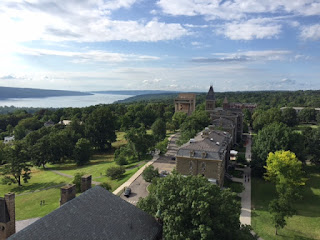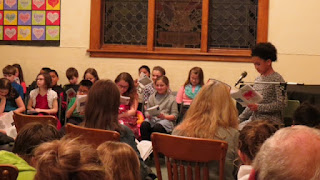 |
| My Parents with Lena |
"There are many great deeds done in the small struggles of life." --Victor Hugo
The above photo is of my parents; a couple of heros of mine. They have both spent their lives in service to others and they continue to model that lifestyle. My parents continue to teach who they are by their actions and the way they live every day of their lives. I will share just one story that captures a bit of who my mom is. . . My mom lives with Parkinson's disease. It has made it hard to communicate and perform some of the basic tasks in daily living. My dad is her constant companion, helper and caregiver. He is pretty amazing and I could write a great deal on his accomplishments, but that is not the story for today. . . My story for today is about a recent hospital visit I took to see my mom and a bit about her story. My mom was in the hospital suffering from pneumonia. She has weak lungs and the Parkinson's disease makes this complicated and dangerous. At any rate, my mom was in the hospital and very frail. The nurse was trying to bring her into conversation. My brother and I started telling stories about her years as a junior high school home economics teacher. She taught in an inner-city school in an American Indian community on the southside of Minneapolis. There was a great deal of poverty, alcohol abuse and broken families in that community. . . issues often associated with a culture that has been displaced and so often disrespected in our wider society. On that day in her hospital room, we recounted a story about one of her students that spent most of the afternoon in her classroom. He was technically not assigned to all her afternoon classes but he was such a distraction and discipline issue, spending the afternoon in home economics seemed the least harmful. He was a handful. One day my mom was out sick and a substitute teacher was in her room. The notes very specifically said that this student was not allowed in the hallways without supervision. The substitute however, allowed him a bathroom break thinking no great harm could possibly happen. Within a few minutes, he had started a fire in the bathroom and there was smoke everywhere. The entire school had to be evacuated. The principal later told my mom to give him a heads-up next time she would be gone, so that he could made sure that student also took the day off. The nurse in the room said, "Boy, I bet you were glad to retire!" My mom, who struggled to get out every word, said, "I felt privileged to be a part of his life." And then she said, "I was talking to a student once and he said (with junior high angst) "Why should I listen to you?!"" My mom responded, "Because I care about you." The student looked at her and said, "No one has ever said that to me before." My mom's class became a refuge for those who needed a safe place and genuinely needed someone who cared about them. They were lucky to have her as a teacher and no doubt they were better people because of her. And my mom really was privileged to be a part of their lives.
Today, my mom struggles with many of the things most of us take for granted. She has a hard time telling her elbow to bend so that she can bring the spoon to her mouth to eat. She has a hard time putting thoughts into words and speaking what is on her mind. She struggles with balance and all sorts of daily activities we take for granted. But here is what I notice now more than ever . . . she is strong. She struggles through each day and still smiles when she sees someone she knows. She continues to care about other people, when it may seem that her own struggle is more than enough to care about. She continues to teach us how to live and she continues to be a hero to those of us who know her. I know that I speak for my whole family when I say, we are lucky to have her in our lives. She and my dad have taught us over and over again that caring for others is a way of life and a privilege. This is an amazing gift and lesson that my brothers and I were fortunate enough to receive. Teaching is so much more than what we say. Teaching is about how we live our lives. Thanks Mom and Dad!
Today, my mom struggles with many of the things most of us take for granted. She has a hard time telling her elbow to bend so that she can bring the spoon to her mouth to eat. She has a hard time putting thoughts into words and speaking what is on her mind. She struggles with balance and all sorts of daily activities we take for granted. But here is what I notice now more than ever . . . she is strong. She struggles through each day and still smiles when she sees someone she knows. She continues to care about other people, when it may seem that her own struggle is more than enough to care about. She continues to teach us how to live and she continues to be a hero to those of us who know her. I know that I speak for my whole family when I say, we are lucky to have her in our lives. She and my dad have taught us over and over again that caring for others is a way of life and a privilege. This is an amazing gift and lesson that my brothers and I were fortunate enough to receive. Teaching is so much more than what we say. Teaching is about how we live our lives. Thanks Mom and Dad!













































